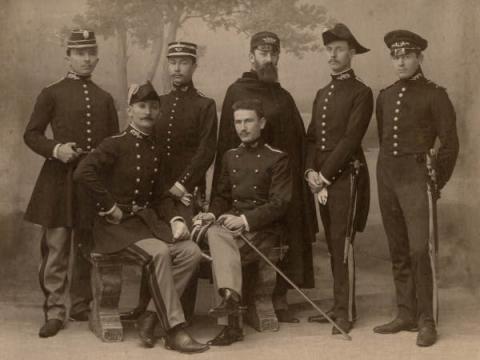
Recruitment of forestry students
February 14 2025Since its creation, the École forestière de Nancy has changed its recruitment method, initially based on a direct competition, before favoring a selection from among graduates of grandes écoles. Its international influence has grown over time, attracting students who come to train in forest management, both in mainland France and abroad.
Until 1889, admission to the École forestière de Nancy was by direct competition, similar to the major military and civilian schools. To pass this rigorous selection process, prospective applicants prepared in the lycées of Paris and Nancy. The admissions system gradually evolved, with mathematics tests taking up more and more space while literary tests decreased. The biological science tests were even abolished in 1874.
From 1830, a few places at the École forestière de Nancy were reserved for graduates of the École Polytechnique. In 1882, two places were added and reserved for students of the Institut National Agronomique. In 1888, a new decree stipulated that admission would henceforth be granted to graduates of the Polytechnic and the National Agronomic Institute on the basis of merit.
Initially, students trained at the École forestière de Nancy were destined to work in the water and forestry administration with the aim of managing the public forests of mainland France. However, with the creation of the Overseas Water and Forestry Administration, attached to the Ministry of Colonies, students were recruited for Overseas France from 1926 and followed the same course of study before completing an internship at the tropical forestry technical center in Nogent-sur-Marne. This recruitment ended in 1957.
With its growing international reputation, the Nancy Forestry School attracted many foreign students. Between 1867 and 1886, no fewer than 85 British students trained at the school before joining the Indian Forest Service. Between 1855 and 1914, more than 90 Romanian foresters trained at the Forestry School. Their success led to the creation of a forestry school attached to the Polytechnic School of Bucharest in 1894. Before the First World War, a majority of European nations sent students to study forestry in Nancy. At the end of the war, this enthusiasm intensified. In 1965, the École forestière de Nancy had nearly 600 graduates from 40 different countries; today, there are thousands of them and they promote French forestry expertise throughout the world.

